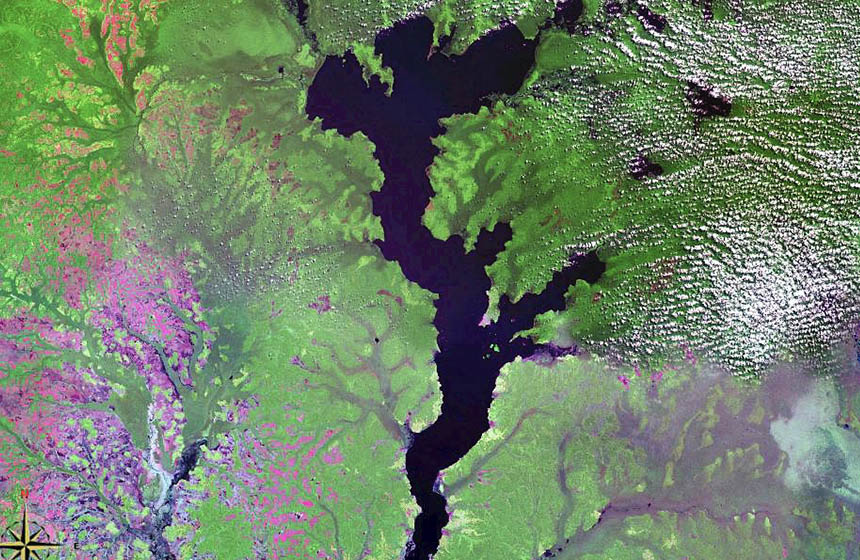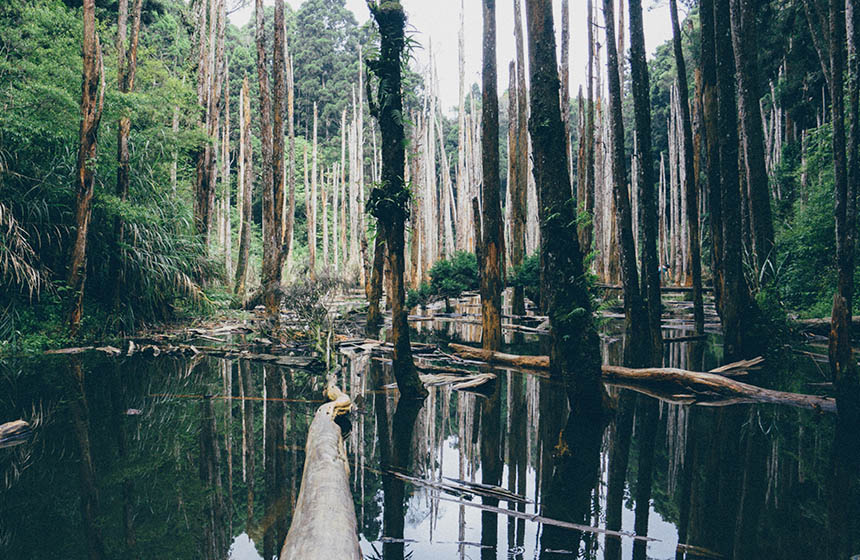Mai Ndombe REDD+ project to protect biodiverse tropical forests
The Mai Ndombe REDD+ project works to protect a biodiverse section of tropical rainforest through investing in the health education, and agricultural techniques of the surrounding community.
Nature-based Intervention:
The Mai Ndombe Reducing Emissions from Deforestation and Forest Degradation (REDD+) Project works with local communities to protect 300,000 hectares of the Congo rainforest. The program does this by investing in reducing the drivers of deforestation through supporting the local community. The program worked to protect already forested areas and implemented reforestation in portions of the forest which had already been deforested. They also invested in community programs, such as constructing 10 schools and building a local health clinic to support community development. A large portion of the efforts to alleviate deforestation pressures also centers around the implementation of agroforestry and sustainable farming. The project has opened an agroforestry nursey and provided new crops and techniques to be utilized by the community in a way which can reduce extractive pressures on the forest system.
Overview of context and outcomes:
This area represents a large section highly valued area of rainforests which have been repeatedly targeted for logging concessions. There is major conflict in the region between large logging companies and the over 180,000 people which inhabit this forest. This also jeopardizes the rare species in the area and their habitat. This section of forest is home to chimpanzees (Pan troglodytes), bonobos(Pan paniscus) and forest elephants(Loxodonta cyclotis); as well as unique wetland landscapes.
Case effectiveness on
Climate change
It is reported that there is a mitigation potential of 100 Mt of CO2 emissions reductions over the 30-year life of the project.
Ecosystem health
Ecological effect: PositiveThe project supported several key ecosystem health outcomes such as an increases in biomass, species diversity and species abundance. It is reported that prior to the start of the project there had not been sightings recorded of leopards(Panthera pardus) or buffalos(Syncerus caffer nanus) within the project area since the 1970s. In 2020 monitoring efforts reportedly recorded the return of the first leopard( and buffalo to the protected forest. Efforts have also been made to monitor the elephant herd in the project, which has split from one herd at the beginning into three herds currently; signaling overall population growth. Monitoring has also reportedly signaled recovery of the local bonobo populations.
Socioeconomic outcomes
Improved health outcomes have been a central part of the project, with overall nutrition reportedly improving for the communities due to investments in building fish ponds and agroforestry. The project has also invested in a health clinic in a central village as well as a mobile clinic in order to bring healthcare to many people who reportedly lacked prior access to these services. Education has also been a source of investment with 10 schools built and 20 more proposed for construction.
Governance
The project is governed in partnership between Era Ecosystems Services and Wildlife Works which implement the intervention through a REDD+ framework in collaboration with local communities.
Finance
The core financing mechanism of the project is the sale of carbon credits through the utilization of the REDD+ framework. It is reported that the project has already had over 13,322,276 credits issued.
Monitoring and evaluation
There are efforts to monitor key species within the forest area.
Trade-offs and limitations
No information yet available on tradeoffs.

Intervention type
- Protection
- Restoration
Conducted at landscape scale
Ecosystem type
- Tropical & subtropical forests
Instigators
- Local NGO or CBO (eg. indigenous)
Societal challenges
- Biodiversity conservation
- Climate change mitigation
- Economic and Social development
- Health
Outcomes
- Food security: Positive
- Water security: Not reported
- Health: Positive
- Local economics: Not reported
- Livelihoods/goods/basic needs: Positive
- Energy security: Not reported
- Disaster risk reduction: Not reported
- Rights/empowerment/equality: Not reported
- Conflict and security: Positive
- No. developmental outcomes reported: 4
Resources
Read resource 1Read resource 2
Literature info
- Grey literature



